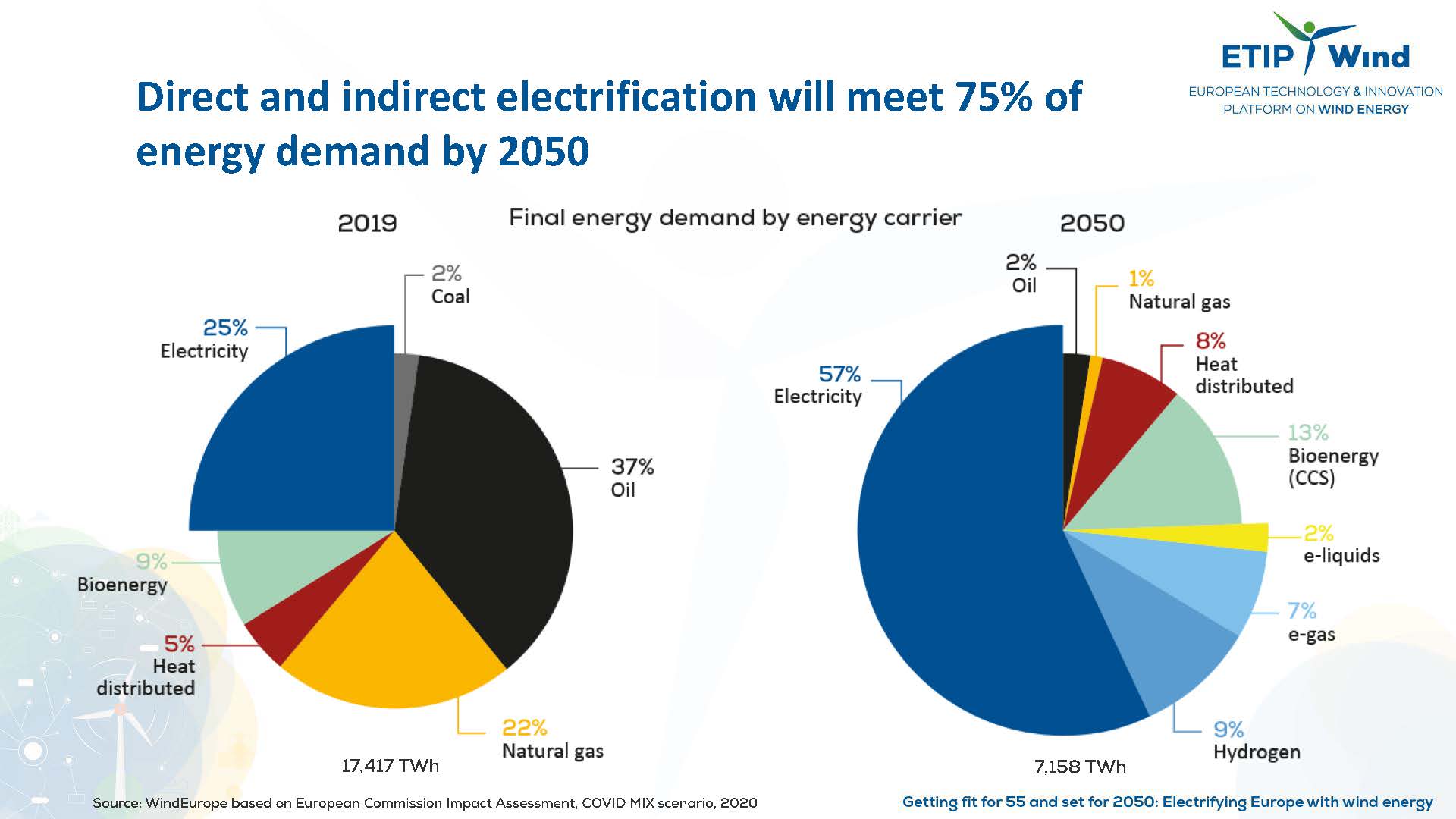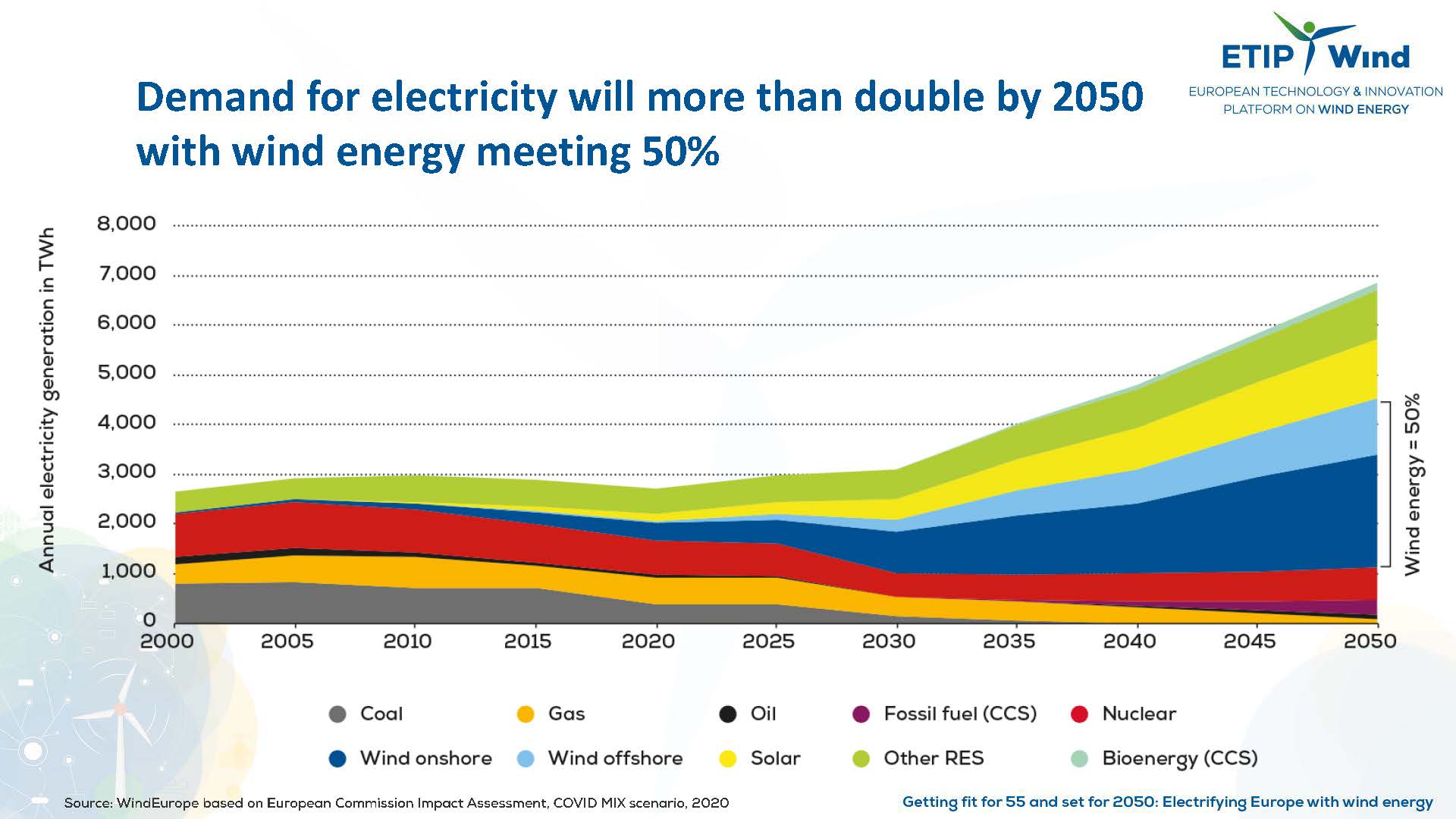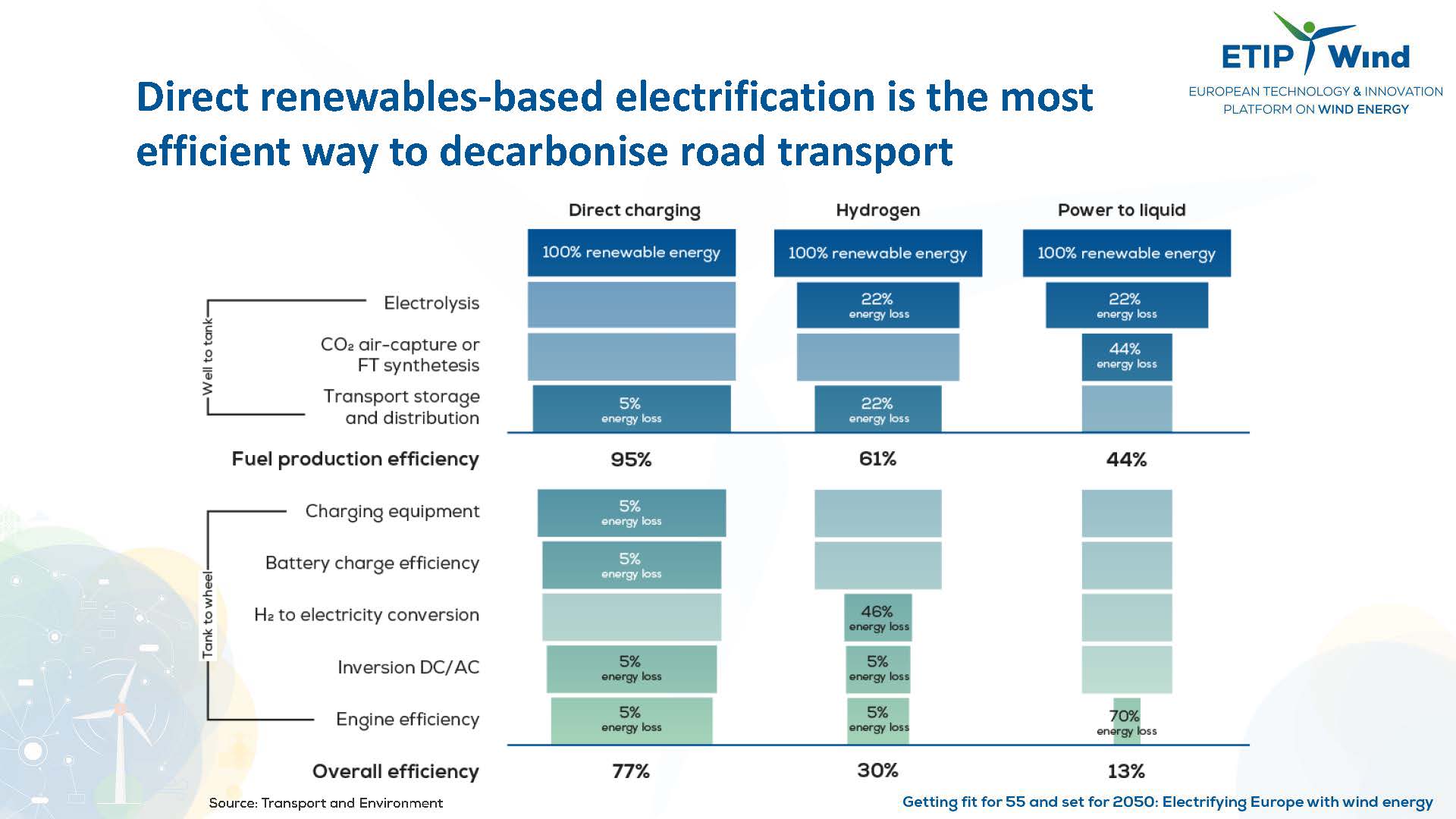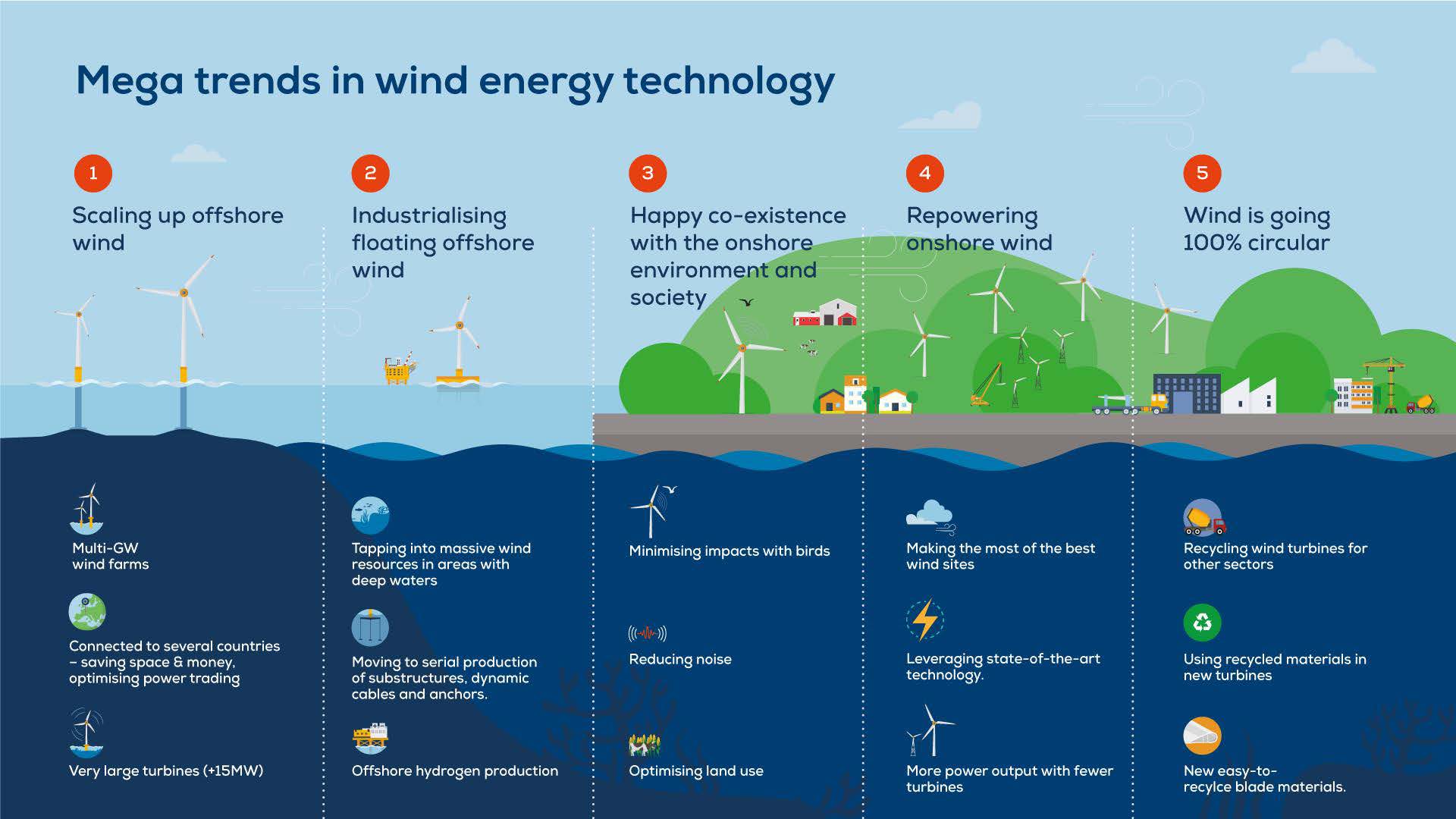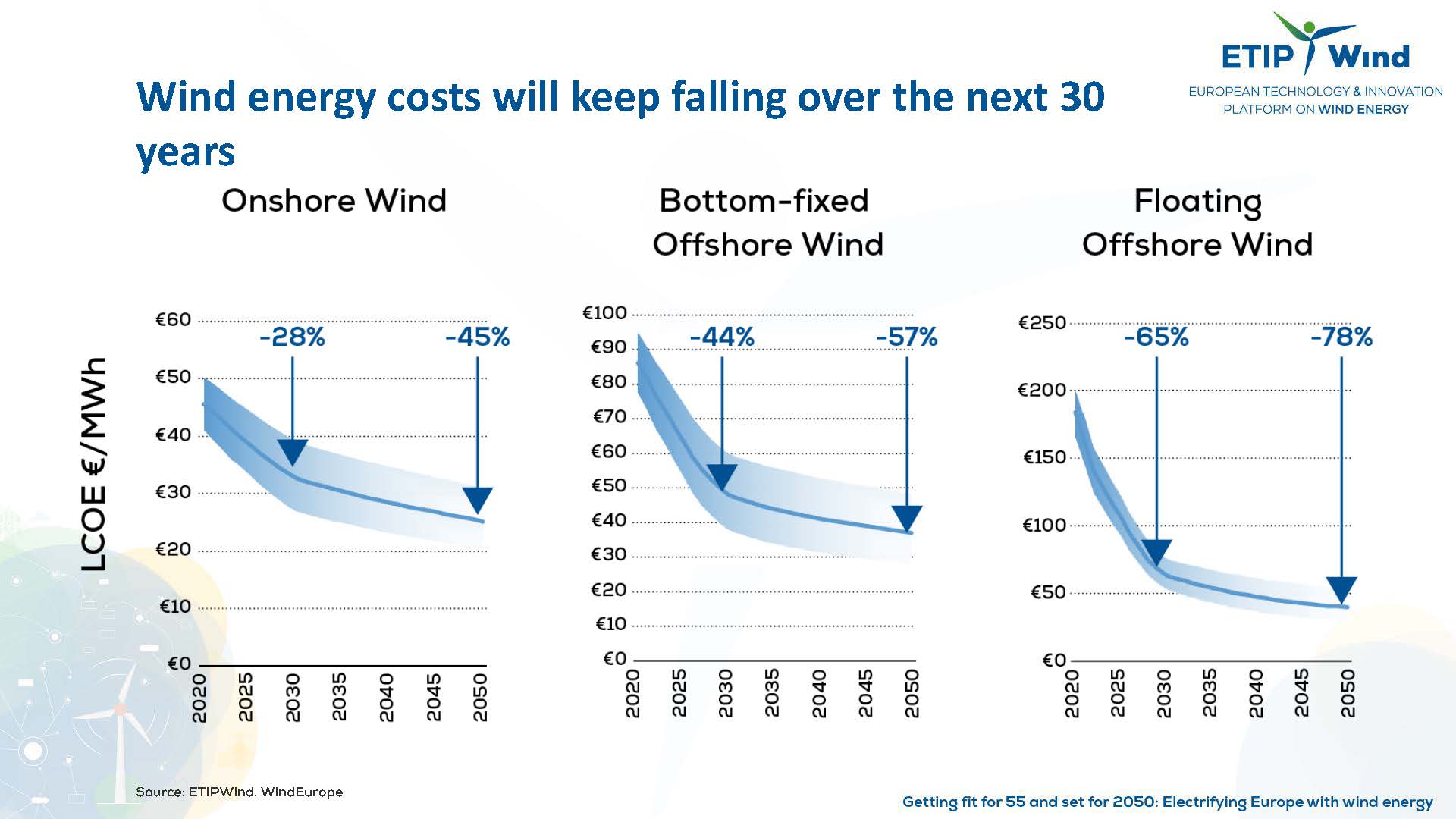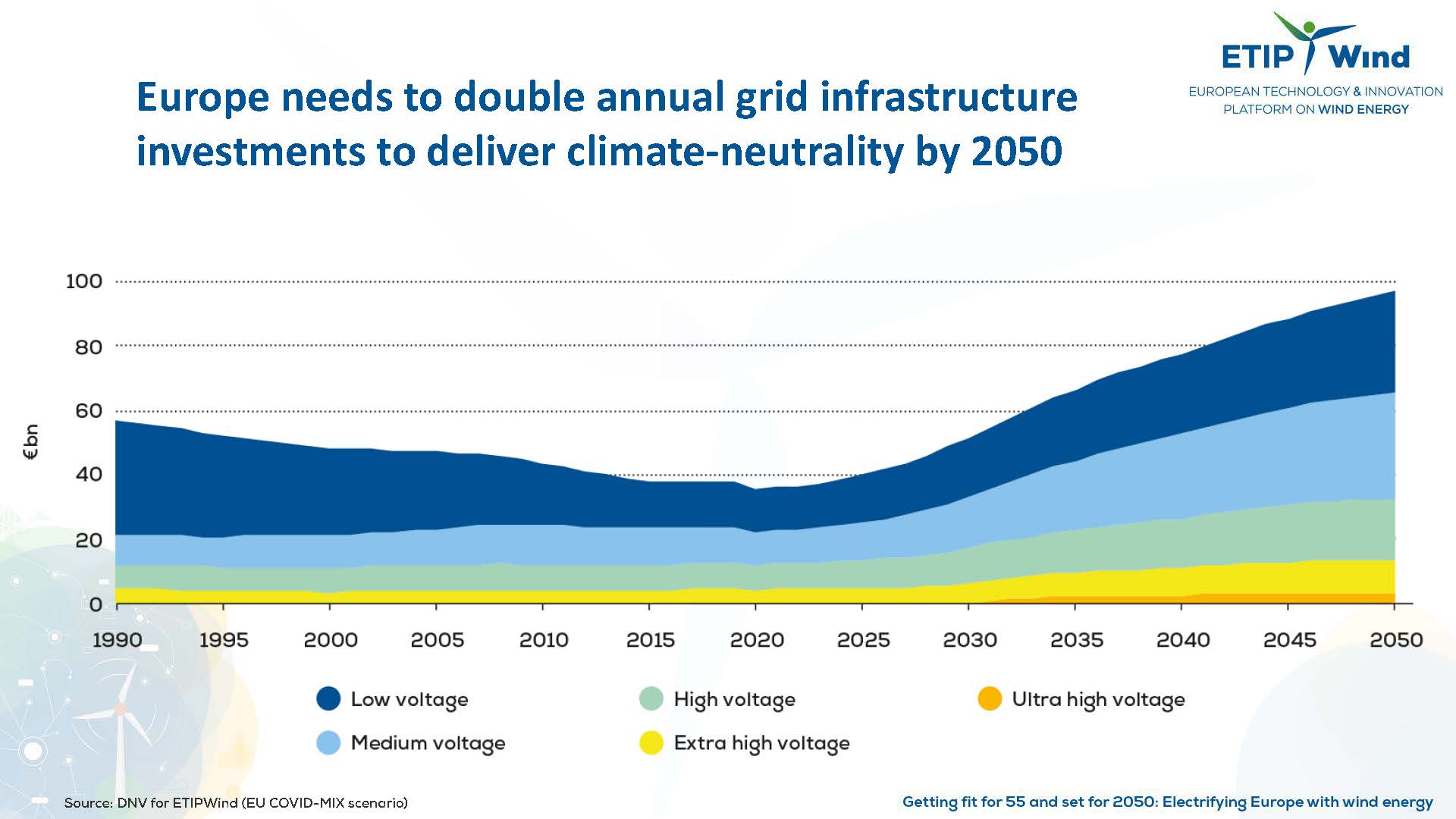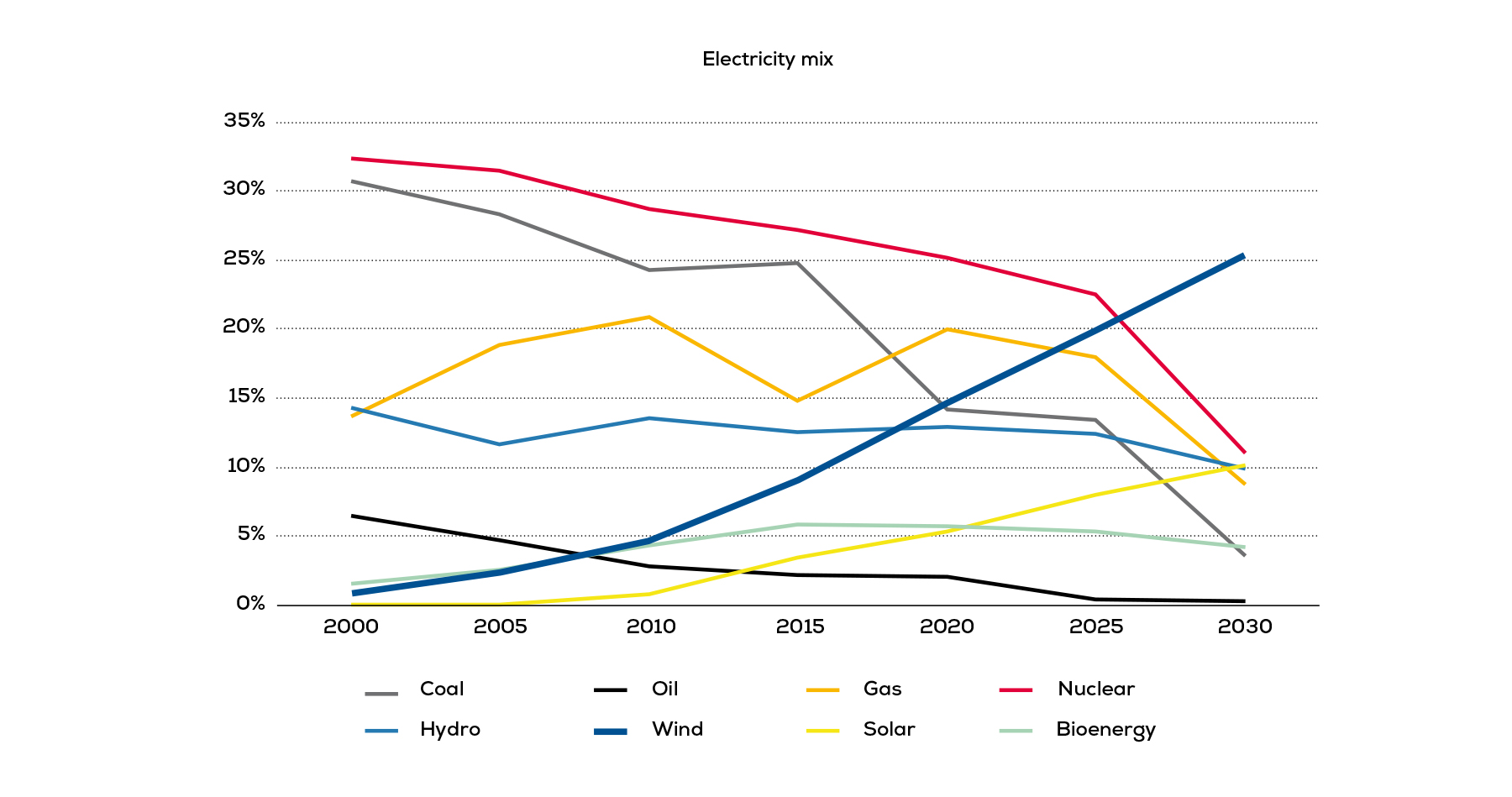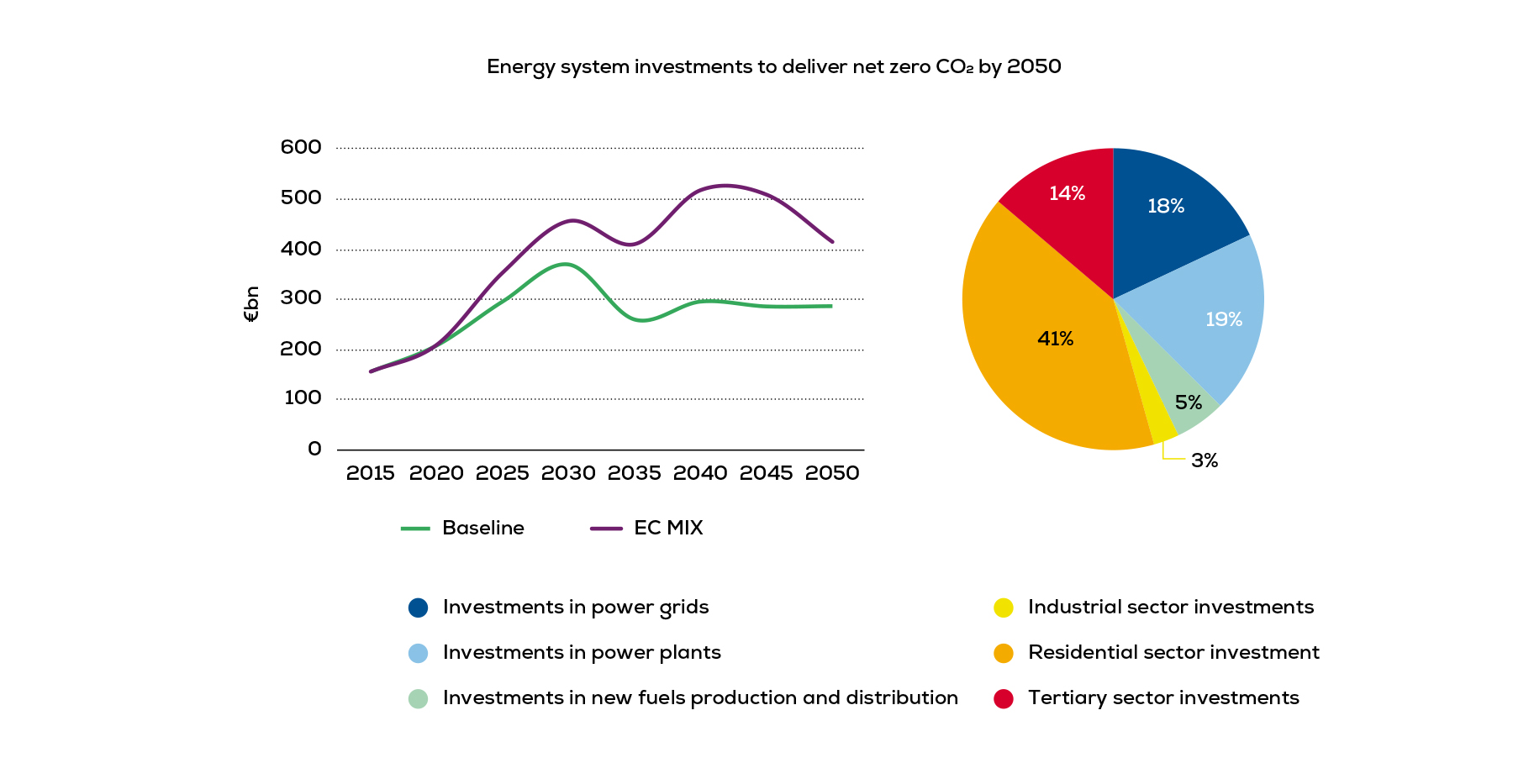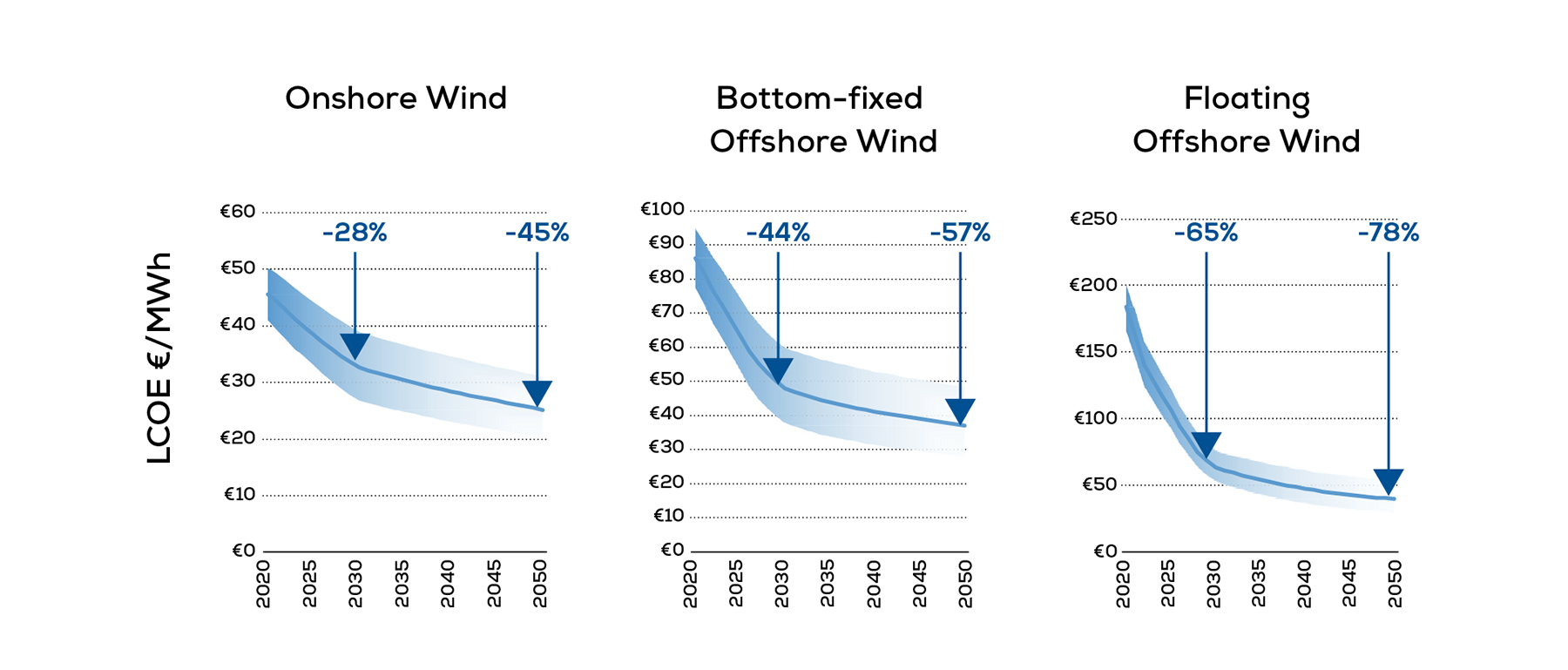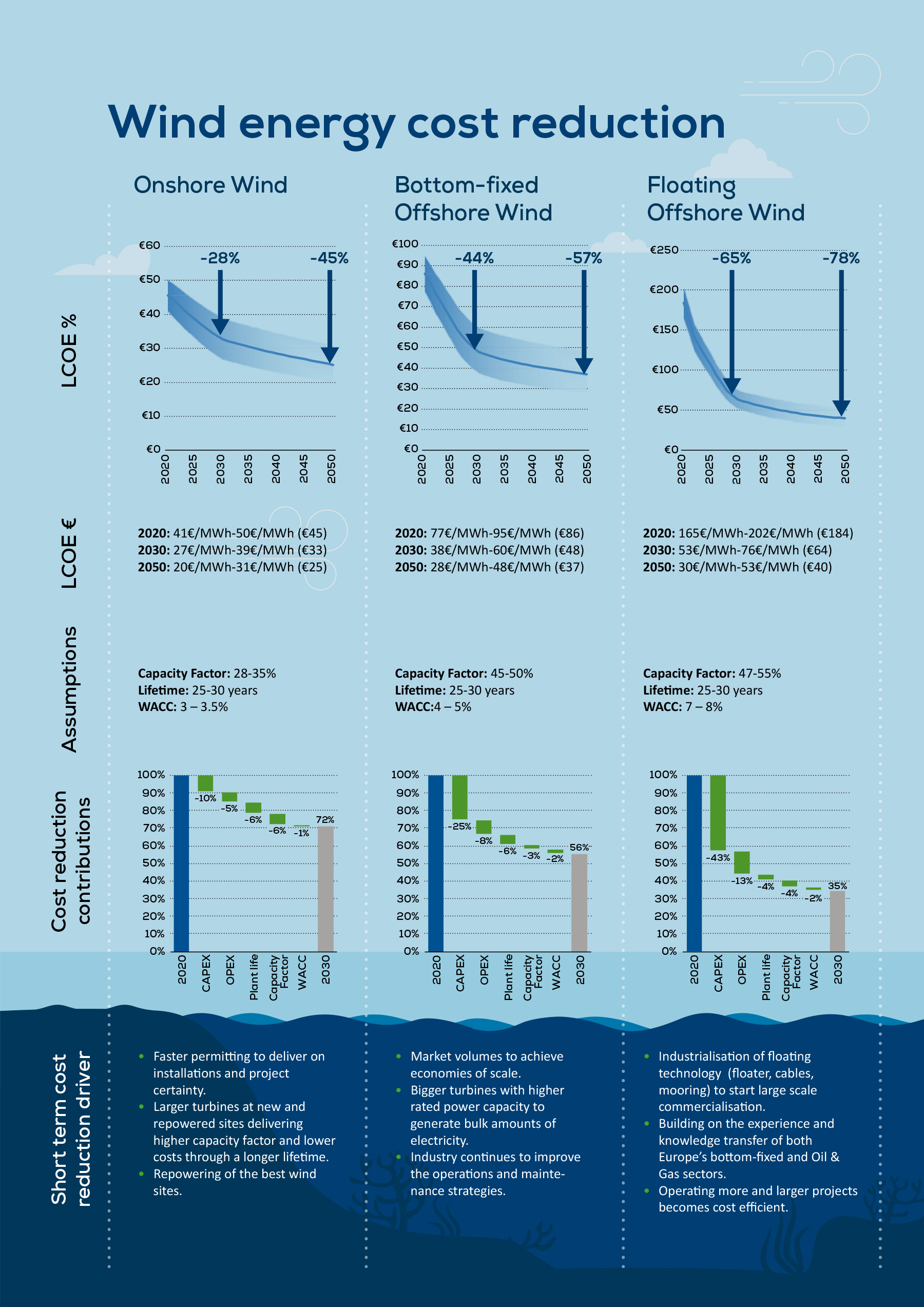Overview
The EU has committed to cut greenhouse gas emission by 55% compared to 1990 by 2030, a key milestone in reaching climate neutrality in 2050. The European Commission’s analysis shows that direct electrification, complemented with the indirect electrification of hard-to-abate sectors, is the most cost-effective and energy efficient way to cut energy sector emissions to net-zero by 2050.
This report shows that deep decarbonisation of the economy is possible. In fact, it will cost no more as a share of GDP than our energy system costs today. And it will dramatically reduce external costs, notably of air pollution, not accounted for today. The technologies that will deliver the bulk of decarbonisation are already available or in development today but need the right market signals to be deployed at scale. The EU can deliver on climate neutrality by rigorously prioritising the deployment of future-proof technologies, investments in infrastructure and the development of the right business models. And at the same time it can fully reap the economic and societal benefits of renewables-based electrification.


